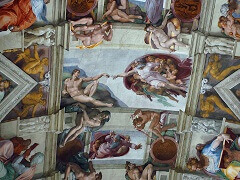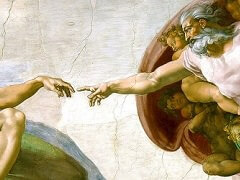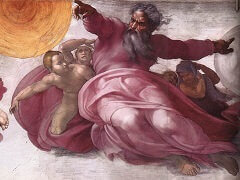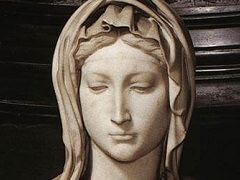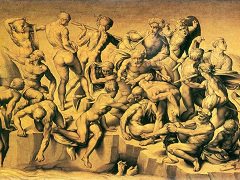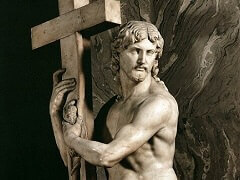The Deposition, by Michelangelo
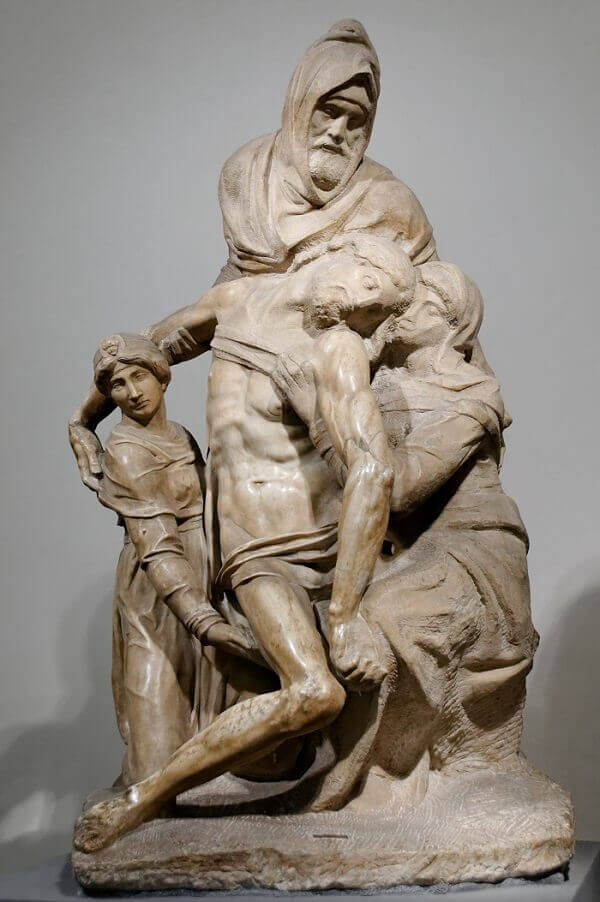
Michelangelo worked on The Deposition intermittently for seven years. He carved it for his family tomb as a fitting memorial for himself and the family he loved so well. By 1547 he was 70 years old
and the knowledge of his own mortality was evidently important in this work. The sculpture is housed in the Museo dell' Opera del Duomo in Florence.
The man at the back supporting the body of Christ is Nicodemus, who was a follower of Jesus and, together with Joseph, helped take down his body from the cross. He was also a sculptor who carved the visions that
God sent him; poignantly Michelangelo has given Nicodemus his own features.
After the demonstrative eloquence of his maturity renouncing the demiurge for the monumental, Michelangelo, devoted the last years of his life to the execution of statues, seemingly unfinished, yet the most moving
of all his works in which the artist concentrated the highest spiritual fervor. If he was depressed all his life, his last years, shown in the moral disposition of the poems, are years of profound melancholy.
Michelangelo fluctuated between the act of pure devotion and the despair of being abandoned by God under the weight of his sins. If architecture and poetry seemed to absorb his attention in his last years, Michelangelo
still remained most faithful to his vocation as a sculptor.
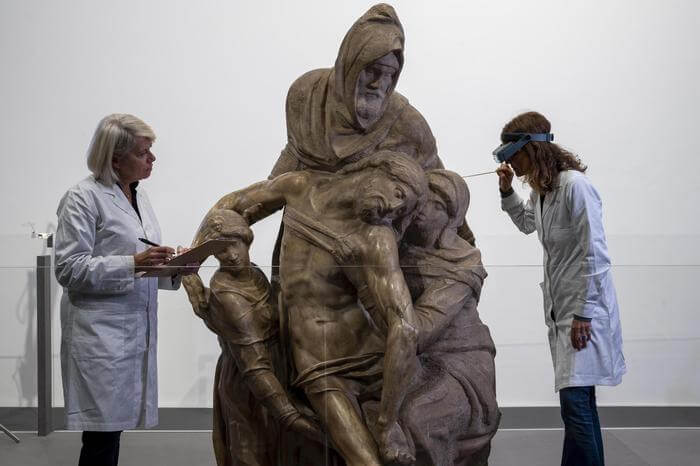
The deformed left arm of Christ has clearly been broken in several places and his right leg is missing altogether. According to Vasari, Michelangelo was deeply discouraged both by his own failing abilities, and
attacked the statue in a fit off frustration. He later gave the work to his assistant Tiberio Calcagni, who attempted to finish it; the incongruous figure on the right, Mary Magdalen, is attributed to
his weak craftmanship.
With Michelangelo's genius: death is no longer a symbol or even a figure but a presence of incalculable wealth that momentarily tempts the viewer, forcing him to become one with the artist's intentions. If we can
separate ourselves from these last creations, it is only because Michaelangelo was able to grasp the emotional sphere of the terrible oscillation between the desire to identify with the death and the will to revive
and to recall the one who just died.


